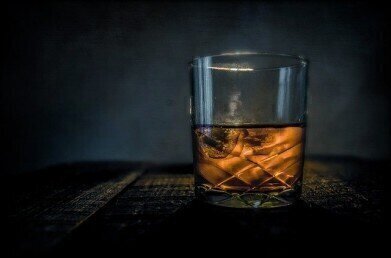Microscopy & Microtechniques
Comparing Whiskeys with Microscopy
Nov 15 2019
In a study that's captured the attention of whiskey connoisseurs around the world, a team of researchers from the University of Louisville in Kentucky have discovered that American bourbons leave behind signature 'web' designs after being evaporated. Analysing popular American brands such as Maker's Mark and Jack Daniel’s, the team noted the presence of weblike residues that reflect the quality and potency of the alcohol.
Interestingly, the webs are exclusive to American bourbons and not seen in Scotch or Canadian whiskies. The team muse this is because American whiskey is aged in new barrels, as opposed to older barrels used in other distillation processes.
Targeting counterfeit whiskey
The findings were published online in the journal Physical Review Fluidsv, with fluid dynamics researcher Stuart Williams and his team predicting the simple test could be used to help identify counterfeit whiskey. Williams also explains how the discovery of webs could be used to develop new ways to speed up the whiskey aging process and simulate the taste and aroma of mature whiskey, without the lengthy timeframe.
To uncover the webs, the team diluted droplets of bourbon with different amounts of water. Each droplet was then analysed using advanced microscope equipment. Bourbons with minimum alcohol concentrations of 35% left behind uniform residues consistent with Scotch whiskeys. In comparison, bourbons with alcohol concentrations of just 10% left markings resembling coffee rings. When analysing diluted American whiskey with alcohol contents of 20%, the team noticed intricate, weblike microstructures.
The effects of leaching flavour compounds
Williams suspects the webs are caused by flavour compounds that penetrate the whiskey as it matures in charred oak barrels. "A lot of [those compounds] do not like water,” explains Williams. When bourbon is diluted with water, it forces these particles to separate from the alcohol and float toward the surface. The particles then form a residue over the droplet, which creates a weblike film as the liquid evaporates. The webs don't appear in alcohols with lower or higher alcohol concentrations as the compounds are either too diluted to coat the surface or too integrated into the whiskeys to form the residual patterns.
“We think each brand leaves a different pattern because each [surface film] has a different chemical composition,” says Williams. “They’re all going to bend and fold in different ways.”
Whiskey isn't the only substance under the lens, with microscopy also used to unlock new insight into the physical properties of plants. For a closer look at the latest research, don't miss 'Lasers Reveal the Secrets of Plant Cell Walls.
Digital Edition
Lab Asia 31.2 April 2024
April 2024
In This Edition Chromatography Articles - Approaches to troubleshooting an SPE method for the analysis of oligonucleotides (pt i) - High-precision liquid flow processes demand full fluidic c...
View all digital editions
Events
Apr 28 2024 Montreal, Quebec, Canada
May 05 2024 Seville, Spain
InformEx Zone at CPhl North America
May 07 2024 Pennsylvania, PA, USA
May 14 2024 Oklahoma City, OK, USA
May 15 2024 Birmingham, UK


















